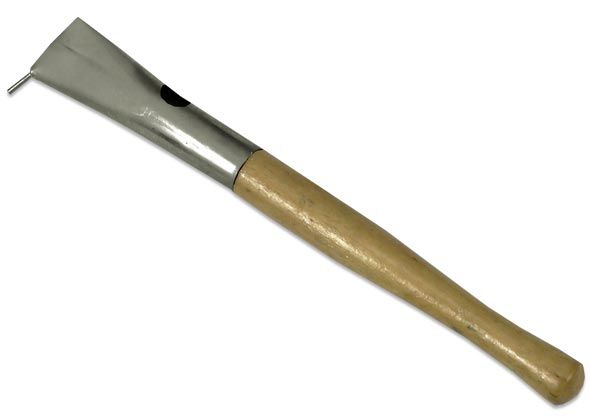If you’re an artist or a creative person who loves exploring different art forms, then you must have heard about batik art. Batik is a traditional Indonesian cloth-making technique that involves applying wax on fabric in intricate patterns before dyeing it. And to create these intricate patterns, the tjanting tool is an essential tool that every batik artist needs.
In this ultimate guide, we’ll dive into everything you need to know about the tjanting tool – from its history and types to how to use it effectively in your batik art.
What is a Tjanting Tool?
A tjanting tool, also known as canting or chanting tool, is a pen-like tool used in batik art for applying hot wax onto fabric. It consists of a small copper bowl with a spout and a bamboo handle. The bowl can hold the hot wax while the spout releases it onto the fabric in thin lines.
History of Tjanting Tool
The tjanting tool originated from Indonesia, where batik art has been practiced for centuries. The word “tjanting” comes from Javanese language which means “to write.” Traditionally, tjantings were made from brass or silver but nowadays they are also available in other materials like copper and stainless steel.
Types of Tjanting Tool
There are several types of tjanting tools available depending on their size, shape, and spout design. Here are some common types:
1. Small Tjantings – These are small-sized tools used for creating fine lines and details in batik art.
2. Large Tjantings – These are larger-sized tools used for filling larger areas with wax.
3. Multiple Spout Tjantings – These tools have multiple spouts that allow artists to create several lines at once.
4. Spoon Tjantings – These tools have a spoon-shaped bowl that holds more wax and allows artists to apply thick layers of wax onto the fabric.
How to Use a Tjanting Tool
Now that you know about the types of tjanting tools, let’s move on to how to use them in your batik art. Here are some steps to follow:
Step 1: Melt the Wax – The first step is to melt the wax in a pot or pan over a low flame until it becomes liquid and smooth.
Step 2: Fill the Tjanting with Wax – Once the wax has melted, fill the tjanting tool with wax using a spoon or ladle. Be careful not to overfill it, as it can spill and ruin your artwork.
Step 3: Apply Wax on Fabric – Hold the tjanting tool at an angle and start applying wax onto the fabric in thin lines or dots, depending on your design. Keep reheating the tool as needed to maintain a smooth flow of wax.
Step 4: Let the Wax Dry – After applying wax, let it dry completely before dyeing the fabric. You can speed up the drying process by using a hairdryer.
Step 5: Dye the Fabric – Once the wax has dried, dip the fabric into a dye bath and let it soak for some time. Then rinse it with water and remove any excess dye with soap.
Step 6: Repeat Process – If you want to add more details or colors to your batik art, repeat the process by applying more wax and dyeing again.
Tips for Using Tjanting Tool
Here are some tips for using tjanting tools effectively in your batik art:
1. Practice makes perfect! It may take some time and practice to get used to using tjantings, so don’t give up.
2. Keep the wax at the right temperature to ensure a smooth flow. If the wax is too hot, it will be runny and difficult to control. If it’s too cold, it will harden and clog the spout.
3. Use a cloth or tissue paper to wipe off any excess wax from the spout before starting each new line.
4. Choose the right tjanting tool for your design. Small tjantings are best for intricate details, while large ones are better for filling in larger areas.
5. Take breaks and stretch your hands and fingers regularly to avoid fatigue and cramps.
Conclusion
The tjanting tool is an essential tool in batik art that allows artists to create intricate patterns and designs on fabric. Whether you’re a beginner or an experienced batik artist, mastering the use of this tool can take your artwork to the next level.
We hope this ultimate guide has given you a better understanding of what tjanting tools are, their history and types, and how to use them effectively in your batik art.
References:
https://www.textileartist.org/tjanting-tool-for-batik-art/
https://www.dharmatrading.com/tools/batik-tjaps-blocks-kits-and-wax/tjanting-tools.html
https://en.wikipedia.org/wiki/Tjanting




